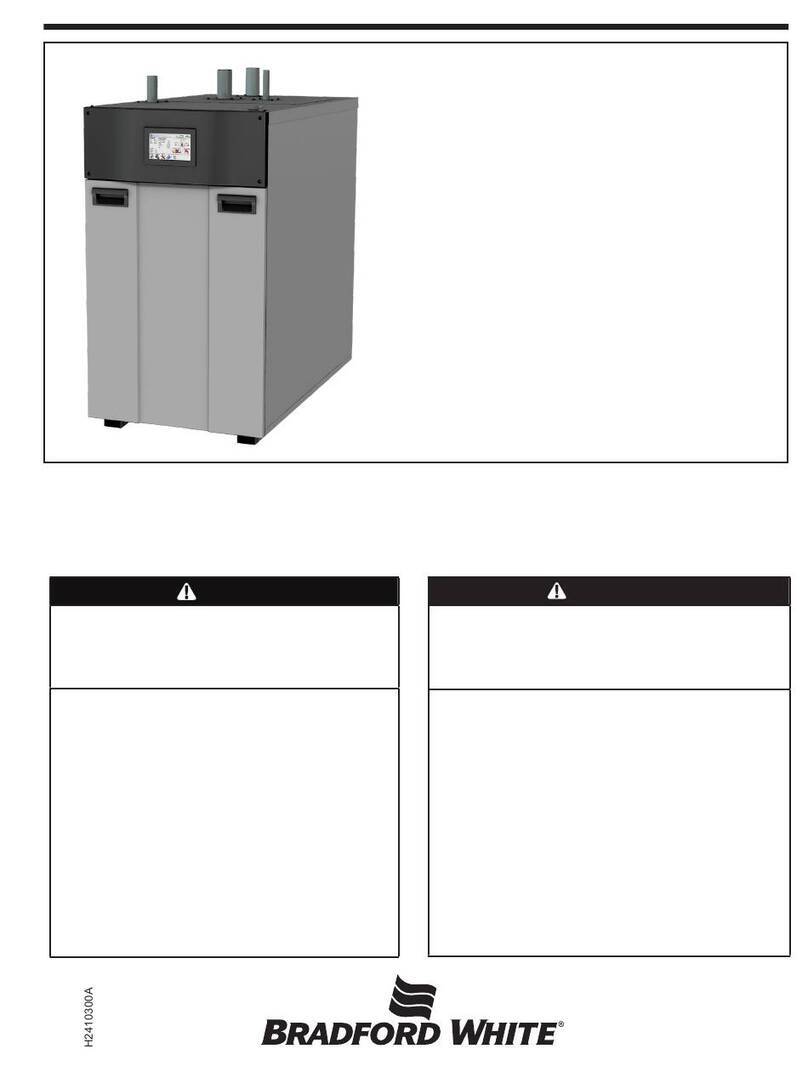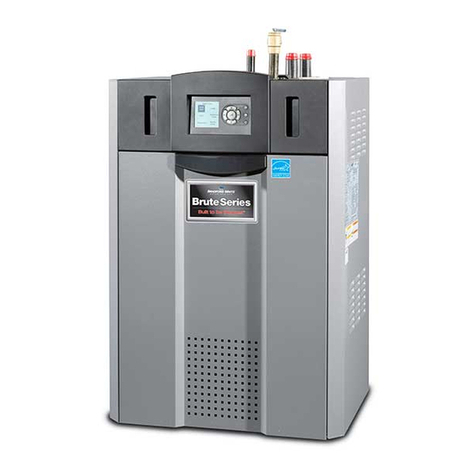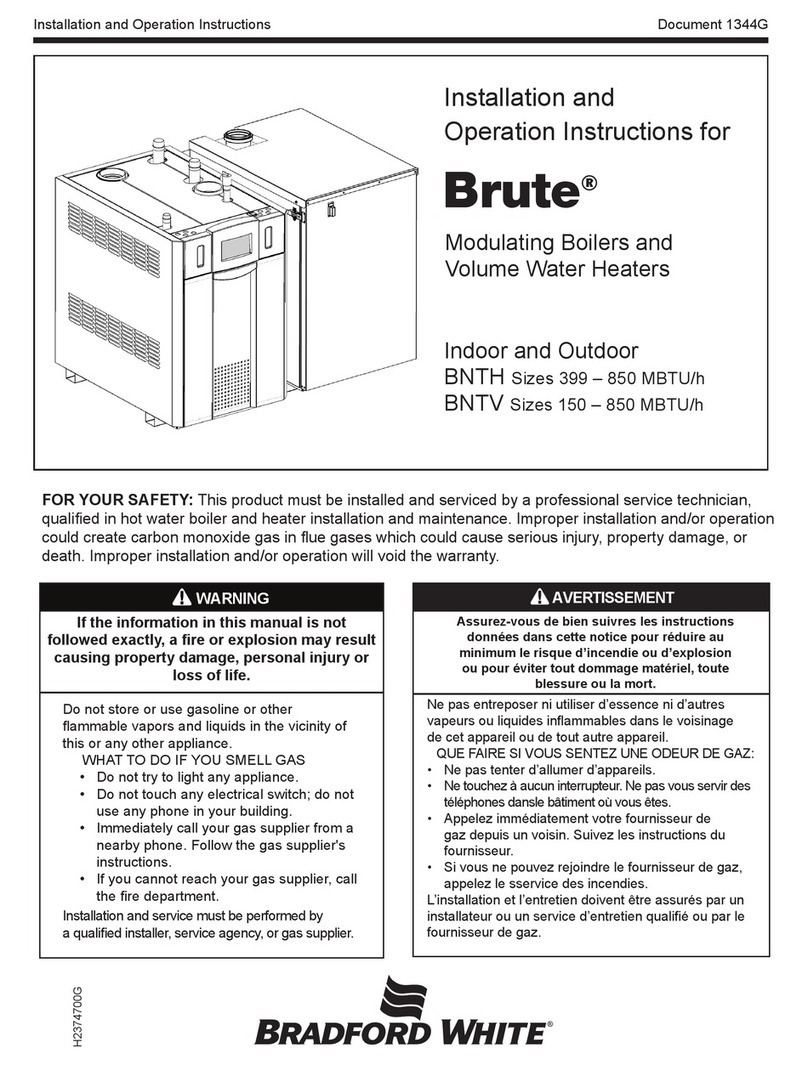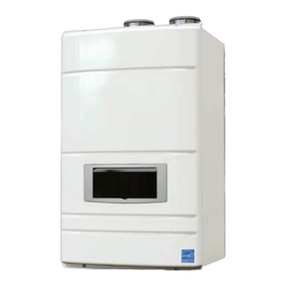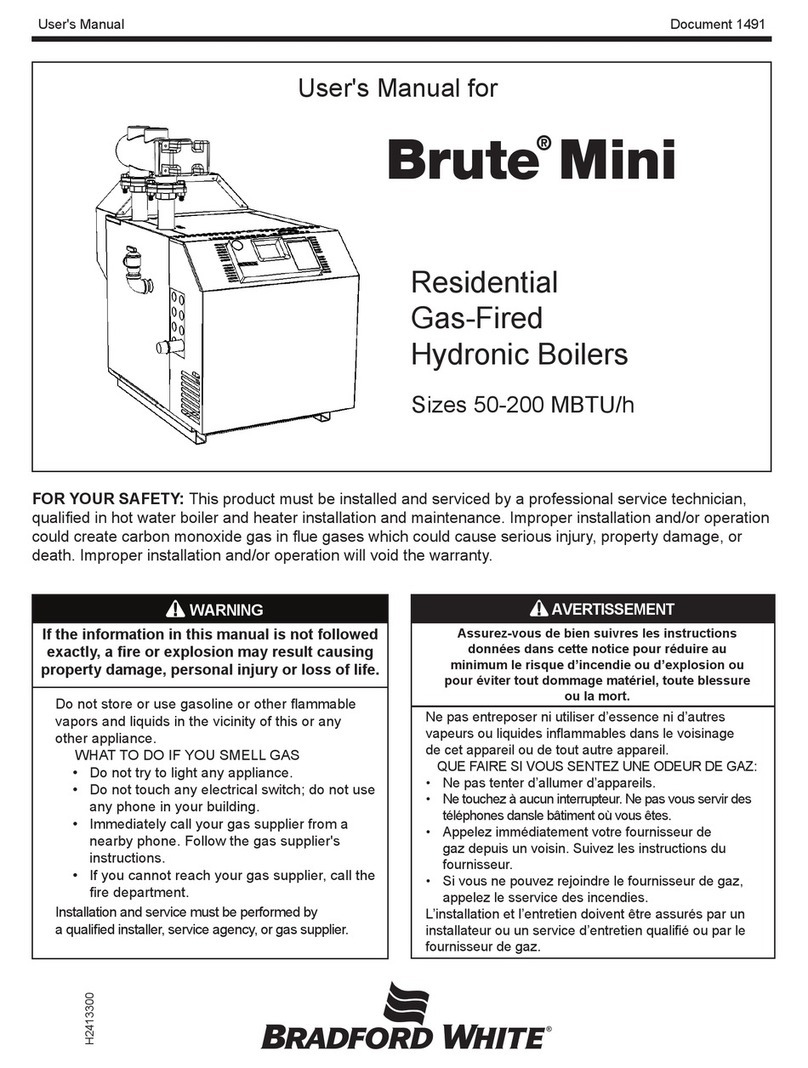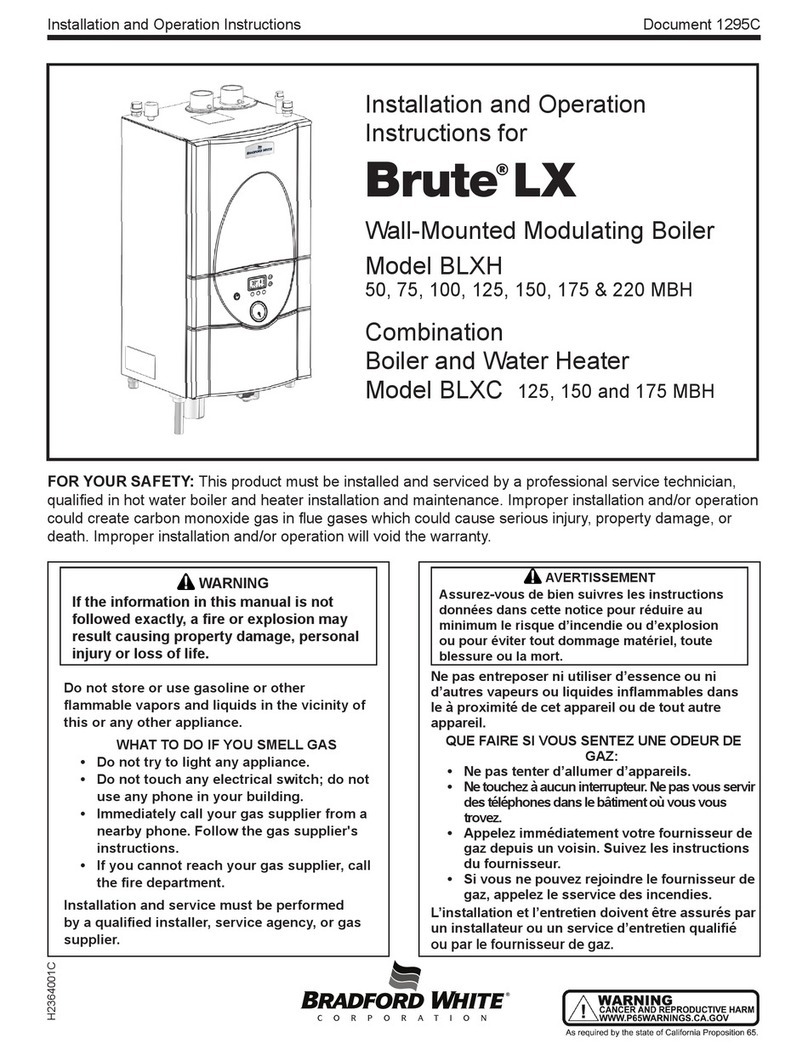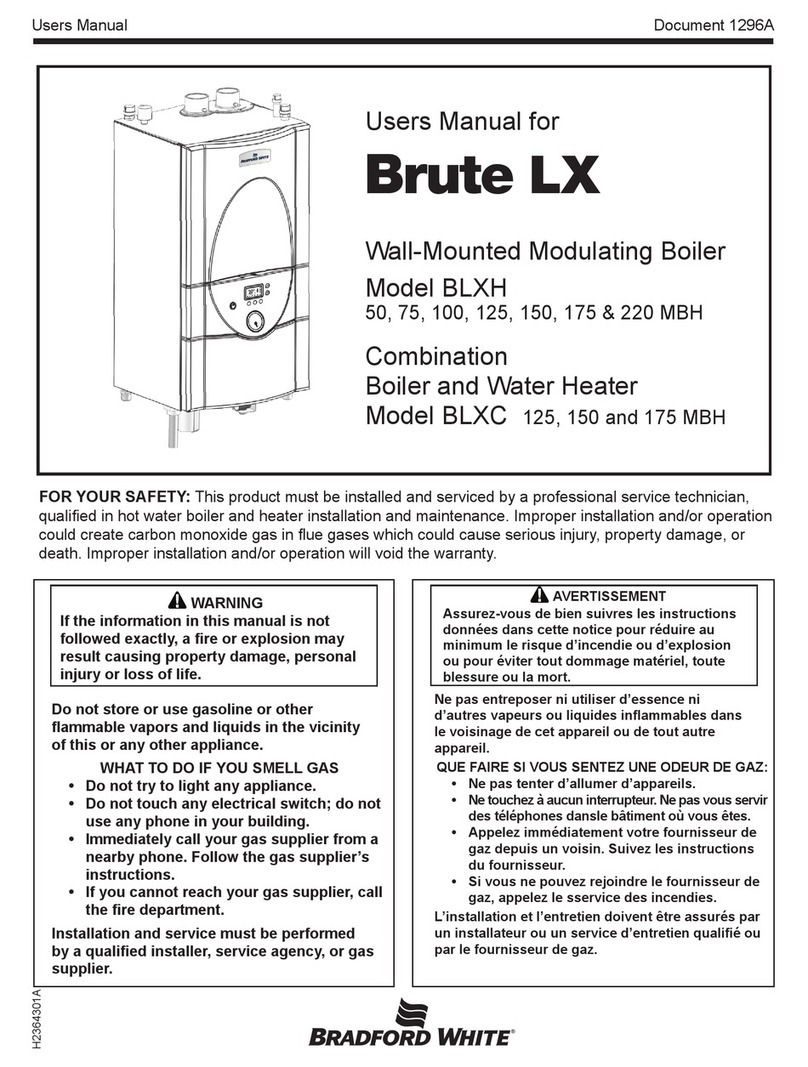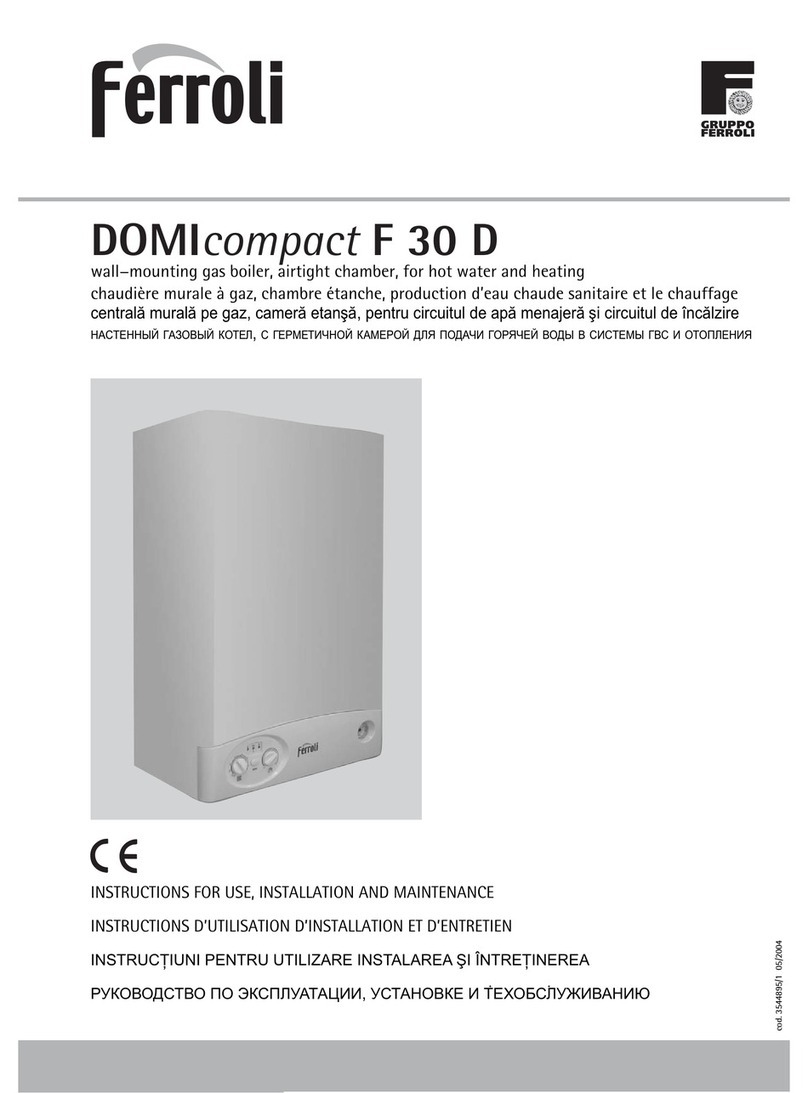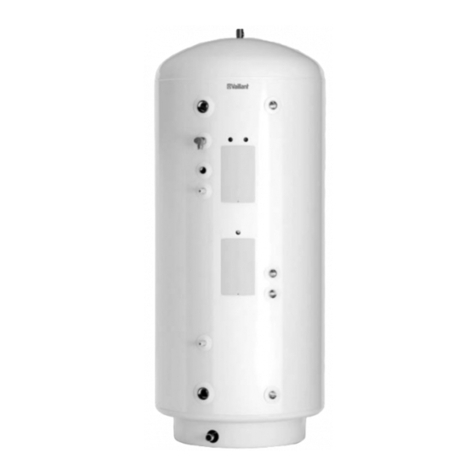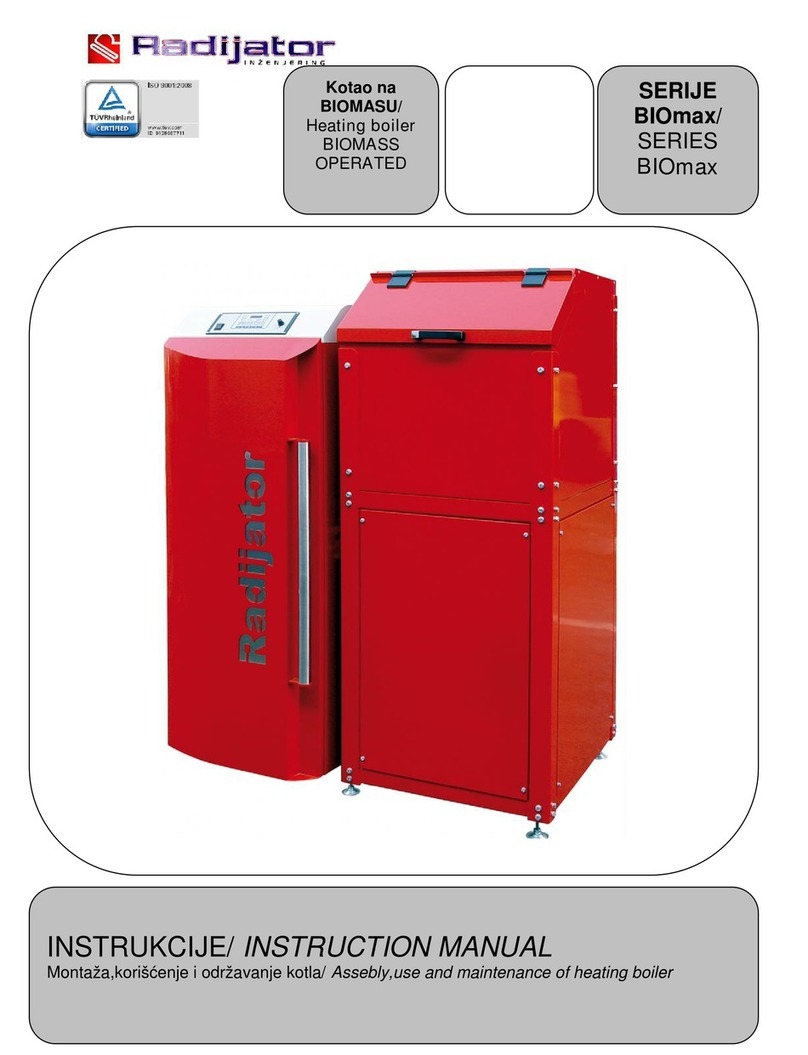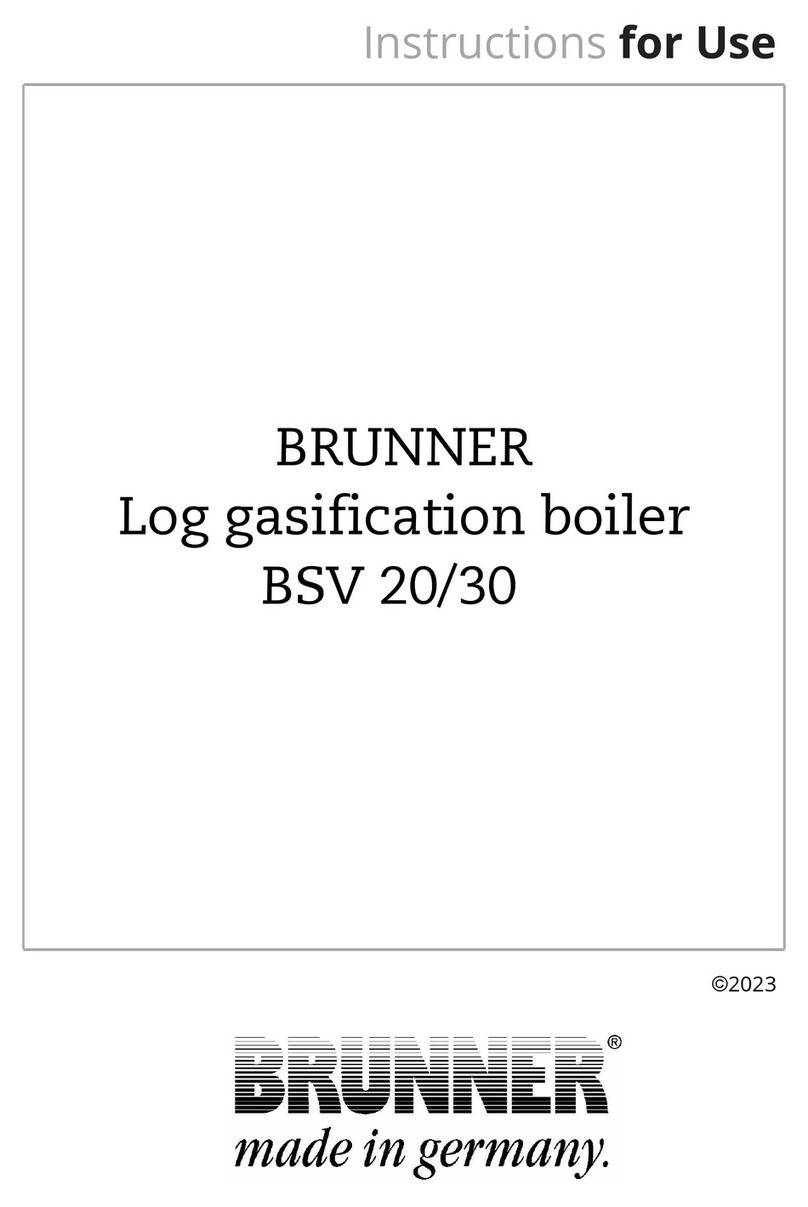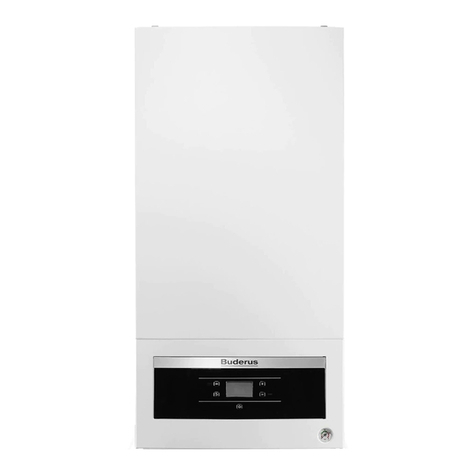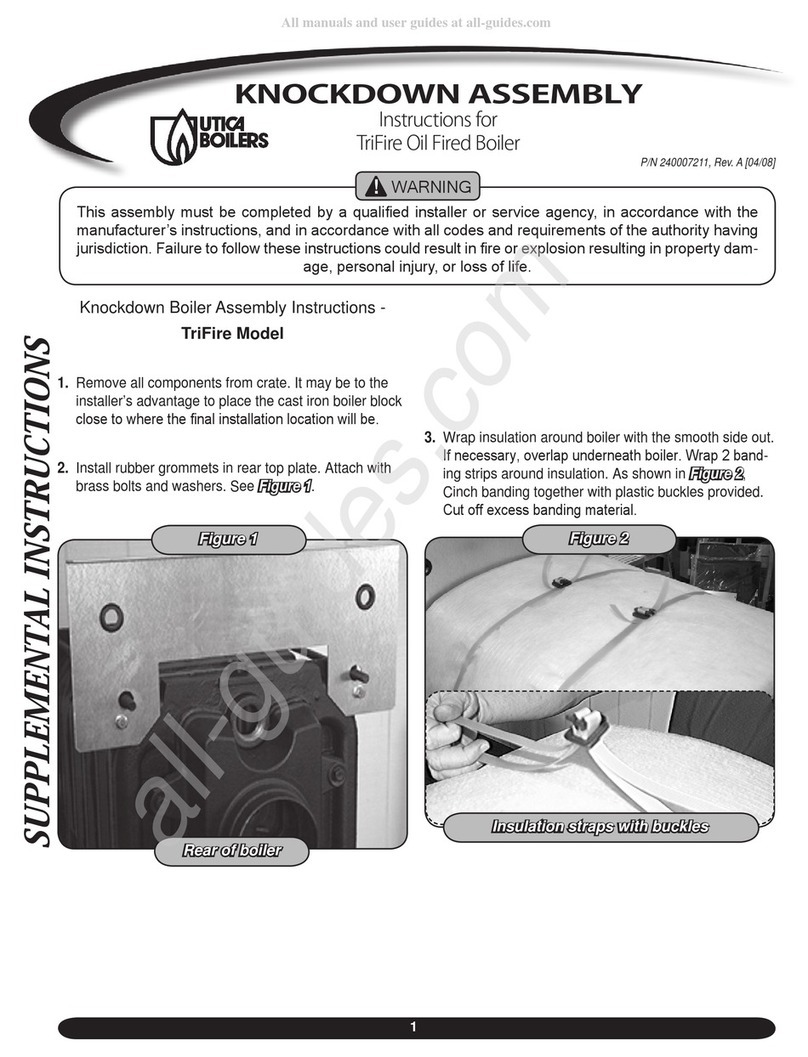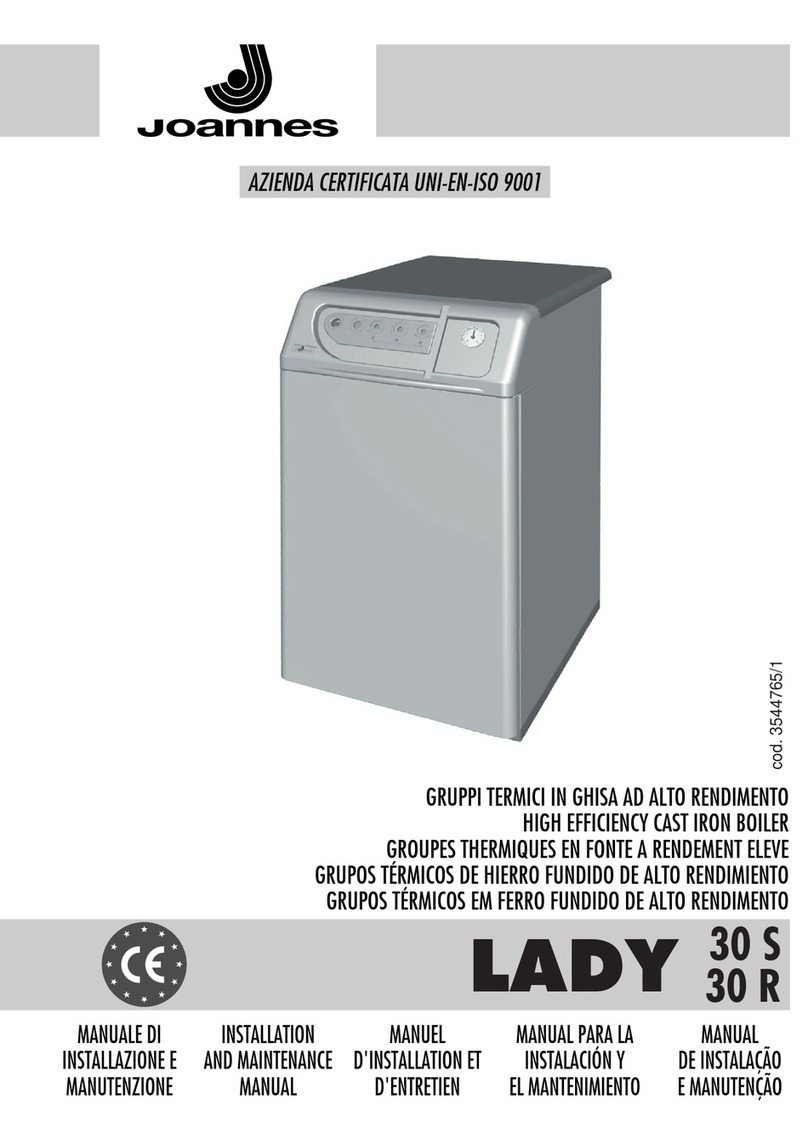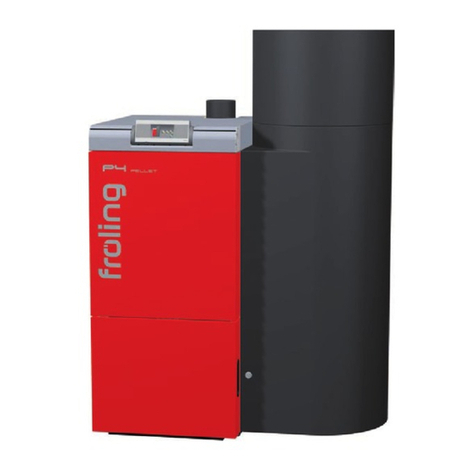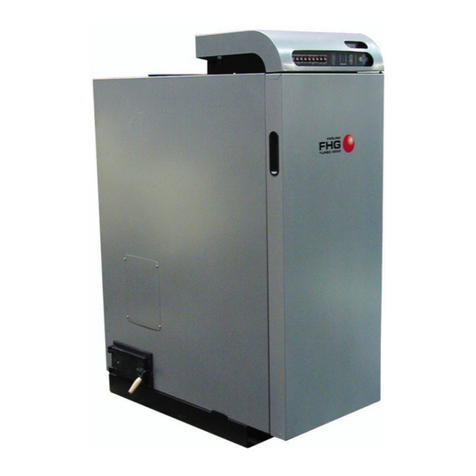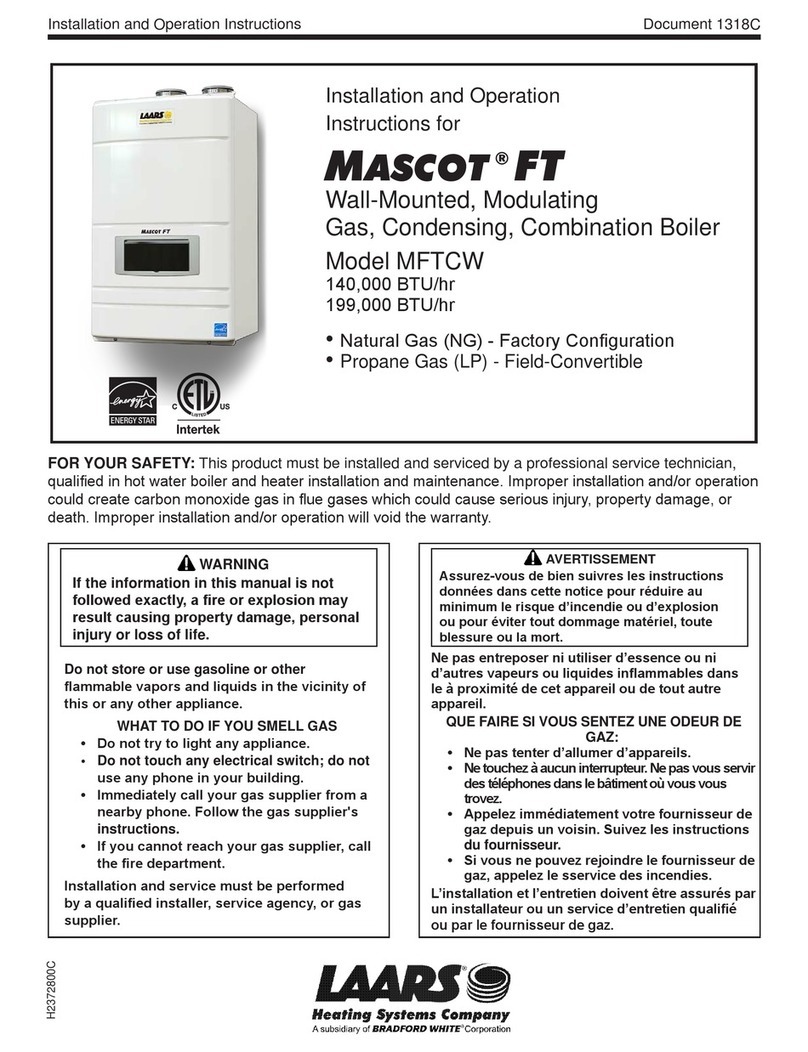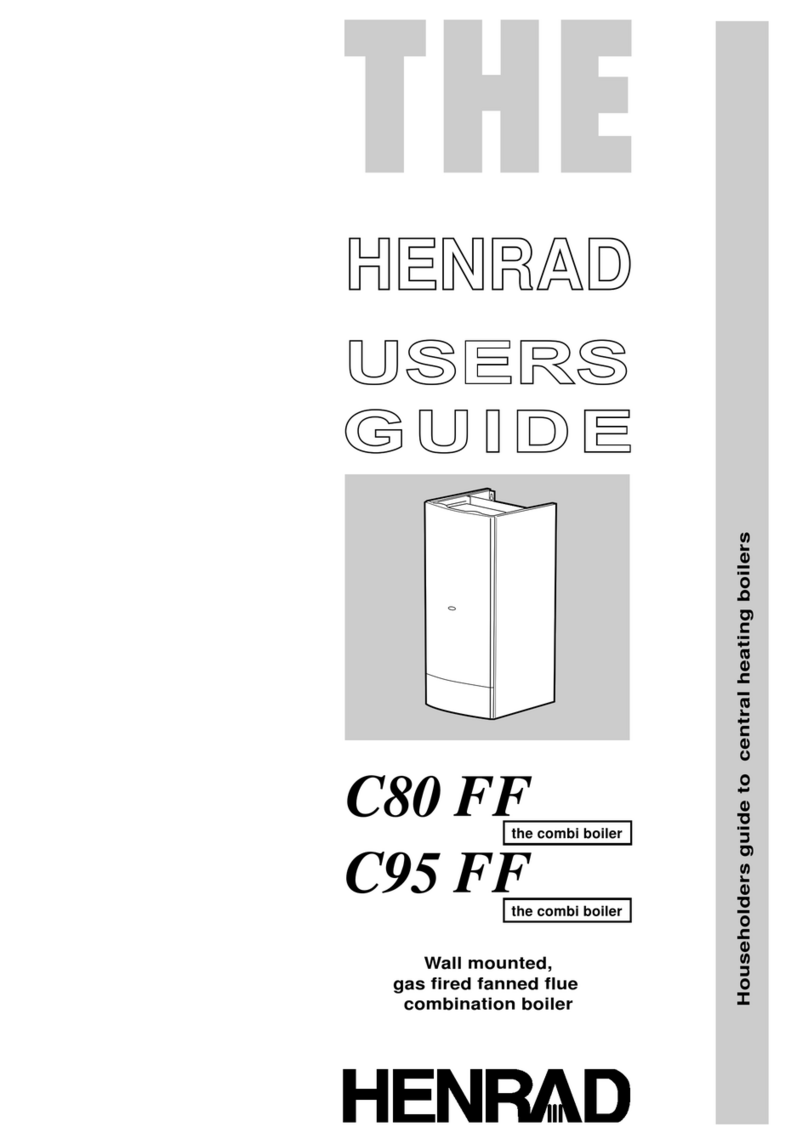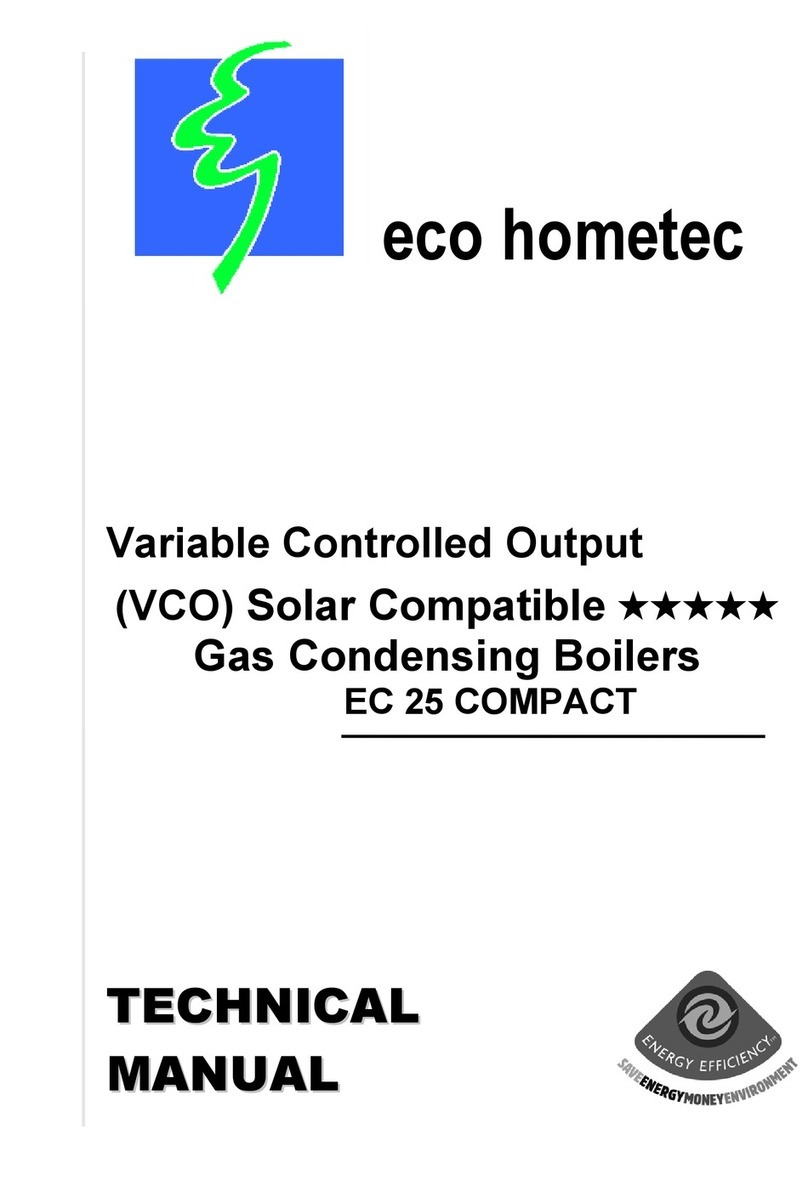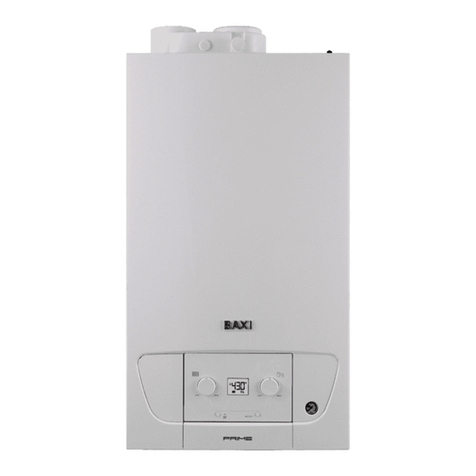
Page 2 BRADFORD WHITE CORP.
TABLE OF CONTENTS
SECTION 1 General Information ............................4
1.A Introduction............................................................... 4
1.B Warranty...................................................................5
& 0RGHO,GHQWL¿FDWLRQ1RPHQFODWXUH......................... 5
' 'LPHQVLRQV............................................................... 6
1.E Locating the Appliance ............................................. 7
) /RFDWLQJ3XPS0RXQWHG:DWHU+HDWHUZLWK
5HVSHFWWR6WRUDJH7DQNV...................................... 7
* /RFDWLQJ3XPS0RXQWHG%RLOHUZLWK5HVSHFW
WR5HWXUQ6XSSO\+HDGHU.......................................... 7
+ /RFDWLQJ$SSOLDQFHIRU&RUUHFW+RUL]RQWDO
9HQW'XFWHG$LU'LVWDQFH)URP2XWVLGH:DOO........... 8
, ,QVWDOODWLRQ.LW ........................................................... 8
6(&7,219HQWLQJDQG&RPEXVWLRQ$LU .............9
$ &RPEXVWLRQ$LU ......................................................... 9
$ &RPEXVWLRQ$LU)URP5RRP ..................................... 9
$ ,QWDNH&RPEXVWLRQ$LU .............................................. 9
2.B Venting....................................................................10
% 9HQW&DWHJRULHV...................................................... 10
2.B.2 Category I Vent....................................................... 10
% &RPPRQ9HQWLQJ6\VWHPV ......................................11
2.B.4 Category III Vent..................................................... 13
& /RFDWLQJ9HQW&RPEXVWLRQ$LU7HUPLQDOV............. 13
& 6LGH:DOO9HQW7HUPLQDO.......................................... 13
& 6LGH:DOO&RPEXVWLRQ$LU7HUPLQDO......................... 15
& 9HUWLFDO9HQW7HUPLQDO............................................. 15
& 9HUWLFDO&RPEXVWLRQ$LU7HUPLQDO............................ 15
' &RPPRQ9HQW7HVW²%RLOHUV................................. 15
( 9HQW7HUPLQDOVIRU2XWGRRU8QLWV............................ 16
6(&7,21*DV6XSSO\DQG3LSLQJ .....................17
$ *DV6XSSO\DQG3LSLQJ........................................... 17
SECTION 4 Water Connections BOILER
or WATER HEATER................18
4.A Boiler ..................................................................... 18
$ +HDWLQJ6\VWHP3LSLQJ
+RW6XSSO\&RQQHFWLRQV²%RLOHU .......................... 18
$ &ROG:DWHU0DNH8S²%RLOHU ............................... 18
$ :DWHU)ORZ5HTXLUHPHQWV²%RLOHU ........................ 18
$ :DWHU)ORZ5HTXLUHPHQWV²
/RZ7HPSHUDWXUH&RSSHU%UXWHOO%RLOHUV.............. 18
$ )UHH]H3URWHFWLRQ²%RLOHU .................................... 19
$ )LOOLQJWKH%RLOHU6\VWHP......................................... 22
4.B Water Heaters ....................................................... 24
% :DWHU6\VWHP3LSLQJ²:DWHU+HDWHU .................... 24
% +RW:DWHU6XSSO\3LSLQJ²:DWHU+HDWHU............... 25
% :DWHU)ORZ5HTXLUHPHQWV²:DWHU+HDWHU ............ 25
% &RPELQHG:DWHU+HDWLQJSRWDEOHDQG
6SDFH+HDWLQJ²:DWHU+HDWHU ............................. 25
% )UHH]H3URWHFWLRQ±:DWHU+HDWHU........................ 25
% )LOOLQJWKH:DWHU+HDWHU6\VWHP............................. 30
SECTION 5 Electrical Connections.....................31
$ ,QVWDOODWLRQ:DUQLQJV .............................................. 31
% /LQH9ROWDJH&RQQHFWLRQV....................................... 31
% 0DLQ3RZHU............................................................. 31
% 3XPS3RZHU........................................................... 31
% %RLOHU+HDWHU3XPS ............................................... 31
% $X[LOLDU\3RZHU2XWSXW........................................... 32
& /RZ9ROWDJH&RQQHFWLRQV....................................... 32
& )LHOG:LULQJ,QSXWV................................................ 32
&D 6DIHW\,QWHUORFNV..................................................... 32
&E %RLOHU+HDWHU+HDW'HPDQGV.................................. 32
&F )LHOG,QSXWV2SHQ&ORVHG..................................... 32
&G 7HPSHUDWXUH6HQVRUV ............................................. 32
&H $QDORJ%$6,QSXW................................................. 33
& )LHOG:LULQJ2XWSXWV............................................ 33
&D 'U\&RQWDFWV........................................................... 33
&E &DVFDGH56 ..................................................... 34
&F %$656%$&QHW0673RU0RGEXV............... 34
5.C.2.d 24VAC .................................................................... 34
' &DVFDGH:LULQJ&RQQHFWLRQV ................................. 35
( :LULQJ'LDJUDP...................................................... 36
) /DGGHU'LDJUDP...................................................... 38
6(&7,217RXFKVFUHHQDQG6\VWHP2SV ........40
6.A The Home Screen................................................. 40
$ +RPH6FUHHQ6WDWXV:LQGRZ................................. 40
$ +RPH6FUHHQ$FWLYH,FRQV ..................................... 41
% /2*,1/RFN8QORFN'LVSOD\6FUHHQ................ 42
& .H\SDG2SHUDWLRQV............................................... 43
6.D Quick Start .......................................................... 44
' &+'+:............................................................... 44
'D &+'+: .......................................................... 44
'E &+'+:.......................................................... 44
' '+:'+: .......................................................... 45
' 2XWGRRU5HVHW ....................................................... 45
' :DUP:HDWKHU6KXW'RZQ................................... 45
' $QWL6KRUW&\FOH..................................................... 46
' 7LPH'DWH........................................................... 46
( &RQ¿JXUH6FUHHQ......................................47
( &+'+:................................................................ 47
(D &+'+:............................................................. 47
(E $GGLWLRQDO6HWWLQJV................................................. 50
( &+'+:............................................................. 50
( '+:'+: .......................................................... 51
( 2XWGRRU5HVHW ....................................................... 51
